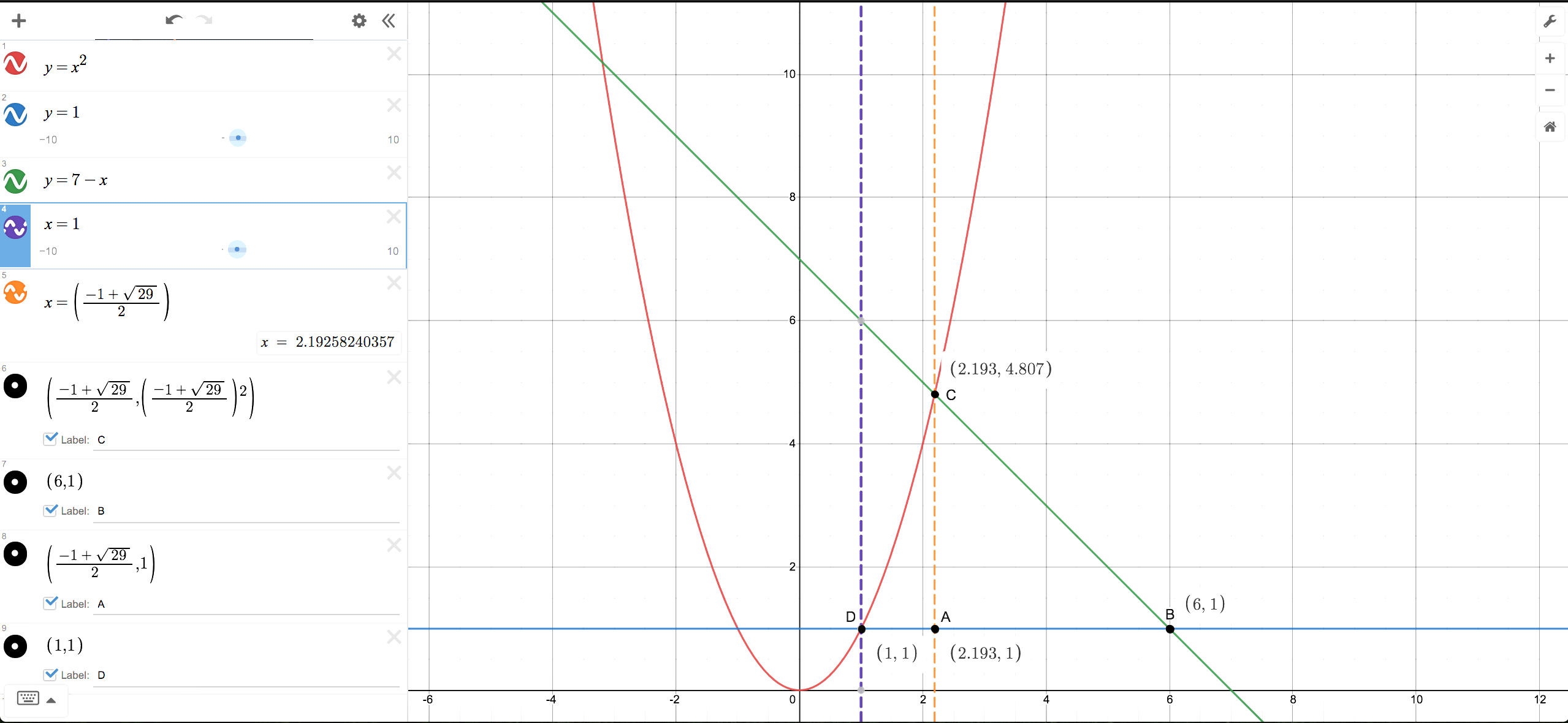Ask Singapore Homework?
Upload a photo of a Singapore homework and someone will email you the solution for free.

Question
secondary 4 | A Maths
One Answer Below
Anyone can contribute an answer, even non-tutors.

How to do part d? ... Help me on how to read graphs, dbfjeeh3jm arghhhb I hate graphs. Anyway please help.
Find the intersection points of the curve and the lines.
When y = 1 and y = x²,
x² = 1
x = ±√1
x = 1 or x = -1
So the intersection point has coordinates (1,1)
When y = 7 - x and y = 1,
7 - x = 1
7 - 1 = x
x = 6
So the intersection point has coordinates (6,1)
When y = 7 - x and y = x²
7 - x = x²
x² + x - 7 = 0
Using the quadratic formula x = (-b±√(b²-4ac)) / 2a ,
x = (-1±√(1² - 4(1)(-7)) ) / 2(1)
x = (-1±√29) / 2)
x ≈ 2.193
(Edit : I decided to use the truncated 4s.f value for the rest of the calculations and workings for convenience and clarity)
So y ≈ (2.193)² ≈ 4.807
So the intersection point has coordinates (2.193,4.807)
We look at the graph (refer to the one I posted) and we notice that the bounded area is CBD.
We realise that the area consists of two parts, ABC and ADC.
ABC is a right angled triangle so we can simply use the formula ½ × base × height.
(AC is vertical and AB is horizontal)
ADC is bounded by the line x = 2.193 and the curve. We can integrate it, and then subtract the area of the rectangle formed by joining point D, A, and the intersection points of the x-axis and the lines x = 1 and x = 2.193.
Area of △ ABC
= ½ × AB × AC
≈ ½ × (6 - 2.193) units × (4.807 - 1) units
≈ ½ × 3.807 units × 3.807 units
≈ 7.247 square units
(We also realise that △ABC is isosceles. The line y = 7 - x has gradient -1 so this means that the rise is just the negative of the run)
Area ADC
= ∫₁²·¹⁹³ x² dx - area of rectangle (length × breadth)
= [⅓x³]₁²·¹⁹³ square units - (2.193 - 1)units × (1 - 0)units
= (⅓(2.193)³ - ⅓(1)³) square units - 1.193 square units
≈ 1.989 square units
Total bounded area
≈ 7.247 square units + 1.989 square units
= 9.236 square units
The answer derived from using the truncated x-value (x ≈ 2.193) is pretty close.
Alternatively, what you may choose to do is,
you can save the exact value in your scientific calculator and use it for all those calculations.
But you can write the 4s.f (or 5s.f) value for your workings on the answer booklet.
The final answer will be more accurate as compared to actually applying the truncated value in the calculator.
See 1 Answer




